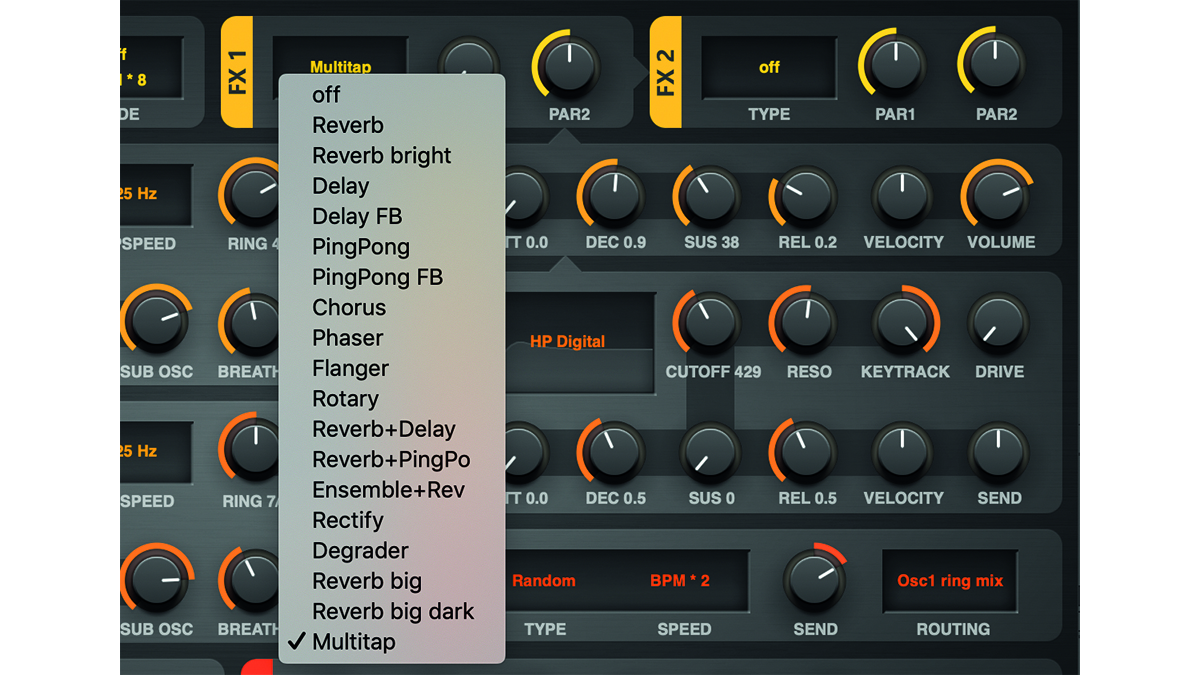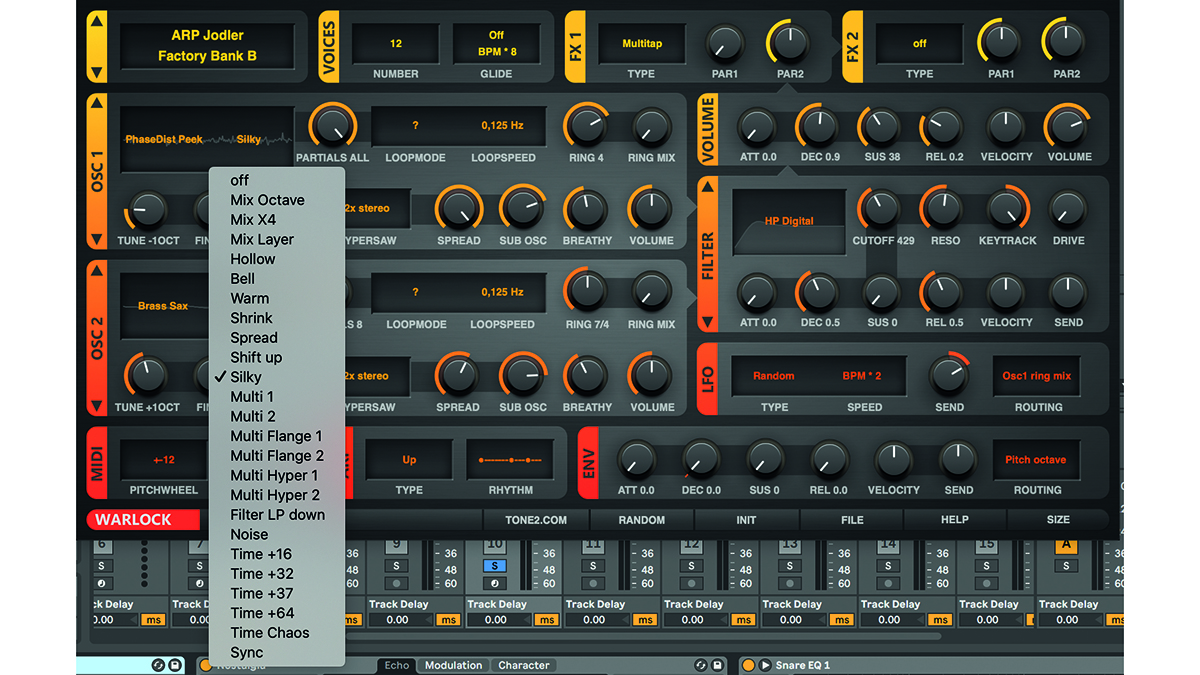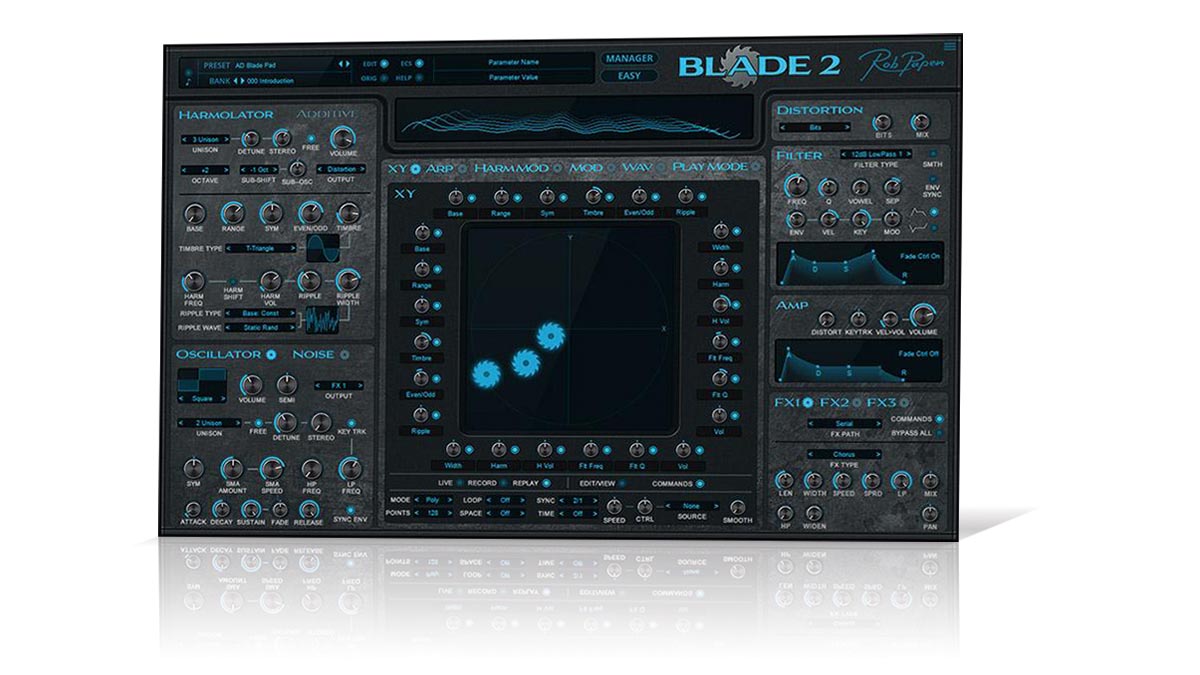MusicRadar Verdict
Warlock is a rare beast: cheap, powerful, flexible and easy; exactly what Tone2 set out to do with it. A cracker.
Pros
- +
Big sound, little price.
- +
It’s easy and simple. Don’t ask more!
- +
Lovely ability to come up with new sounds, easily.
- +
Lots of power, just well hidden.
Cons
- -
Looks aren’t going to win too many awards.
- -
Deep sound designers will snort (the rest of us will gloat).
MusicRadar's got your back
What is it?
Surely the big draw of the virtual synthesizer is that you are not limited by any physical restraints as you would be in the real world, just by how much grunt is delivered by your computer processor. You want dozens of filters and oscillators? No problem. Hybrid design? Yes, please. A lime green GUI? Well, maybe.
But then the ability to have unlimited features can have an adverse effect. Many software synths have become unwieldy, weighed down by their own bloated offerings, unable to focus on anything in particular, jacks of all trades and full of so many options that you become terrified of the choice and loading them up.
A powerful, feature-packed synth with a smooth workflow is something of a dream, then, but that’s what Tone2 is attempting with Warlock. Grunt, diversity, ease of use and amazing sound quality. Surely what we all want, right? What’s that you say? Less than 70 bucks? Can this be, then, the golden synth ticket we’ve been waiting to unwrap?
Looking at the specs though, and things do start getting a lot more interesting. 84 oscillator-types (and up to 24 per voice), 38 filter types, 18 effects, an arpeggiator with 22 modes, a Random button for instant sound generation and over 2000 of said sounds (not generated randomly but expertly-programmed – see later) are just some of the stats. And already you can see that Warlock is delivering in its promise, at least with the numbers.

Harmonic Content Morphing
Warlock uses the same type of synthesis architecture as used in other Tone2 synths like Gladiator. Harmonic Content Morphing (HCM) synthesis delivers a sound “not possible with subtractive, additive or FM synthesis alone”. It essentially uses different waveforms as the core ingredients but allows them to morph and change the harmonic content over time.
The architecture comprises 84 Spectrum Tables (and, yes, you can think of as wavetables) each with up to 256 snapshots, each of these the equivalent of a traditional single oscillator waveform.
The Spectrum Tables can be modified with 25 different algorithms These include names like Shrink (for a warmer sound), Multi 1 (for thicker sounds) and Multi Hyper (multiple noisy waves playing simultaneously).
Want all the hottest music and gear news, reviews, deals, features and more, direct to your inbox? Sign up here.
You also get two further modes, Loopmode and Loopspeed that define how the Spectrum Tables are played back and how fast the morphing is performed. Combined, these alter the harmonics of each Table over user-defined periods, giving you a lot of control over the sound, with a minimum of fuss, which is essentially Warlock summed up in a sentence.

Performance and verdict
Unlocking the detail
What Warlock does well is put the minimal number of parameters you need from this synth architecture on display for you, with each control having a dramatic effect. This means that on a sound design level you can simply change a waveform here or a morphing action there and you will instantly hear an obvious sonic development.
On a basic level, there is no need to really understand what is going on – although it helps, and reading both the Warlock and the more detailed Gladiator manuals from the Tone2 website pays dividends. Yet experimentation often yields that ‘Eureka’, just-come-up-with-your-own-sound-but-not-quite-sure-how kind of moment. And as good as these manuals are, having a good old play with Warlock will soon have you feeling your way around the edges of its wavetable-like innards.
A good old play with Warlock will soon have you feeling your way around its wavetable-like innards
Or, if you really want to take that simple philosophy further, just dive into the 2100-odd sounds! One of the first things that might strike you is the quality of what’s on offer – let alone the width – many presets with a great dynamic, both in terms of movement and range.
Basses thud when they should, arpeggiations sear and tear through with a twist of the Filter and Resonance controls, and there are plenty of incredible growls, bassy twists and show-off leads for dance music. In fact, if anything, that is the focus, which is fair enough these days.
Some more unusual textures would be nice, but the beauty here is that you can change core Spectrum Wavetables in an instant – along with many other parameters like Modifiers, Loopmode/speed and the many filter and effect types – to easily twist anything on offer to something new and more out there. And then there’s the Random button to do it in an instant. It’s all very creative and very quick.
Go to War?
Part of the appeal of a great instrument can undoubtedly be its almost ‘come hither’ looks, beckoning you to make sweet music together. It's a little unfair on Warlock, criticising it for not having those as its appeal lies in instant programmability for all levels of synthesist.
You can just get in there and make any of the many sounds on offer your own, with just one or two clicks. That said, it would be great to see an option to switch it from ‘Simple Mode’ to ‘Slightly Less Simple Mode’, throwing in some of the larger graphics from Gladiator3 into the UI mix or unveiling some extra modulation or surgical parameter tweaking. But maybe that's missing the point – that is what Gladiator is for after all – or maybe Tone2 have that ace up their sleeve for version 2.

• Rob Papen Blade 2 Diverse sound, and the higher price gets you some excellent depth
• Plugin Boutique Carbon Electra
Similar dance style, more complex but still easy, and now silly money
Whatever your thoughts on the UI, the most important aspects of any softsynth are: does it sound good and will you use it? On the former, the answer is ‘most definitely’ – the dynamic range and quality is there to behold, and the diversity of Warlock’s output can be heard with one sweep through any bank.
And on the latter ‘in use’ question, here’s the thing: after a few days of use, Warlock will most likely barge its way into most of the projects you are currently working on, with absolutely no intention of leaving.
This synth delivers more than pretty much any synth of its price (and more than many costing a heck of a lot more). You won’t want to ask too many questions along the way, but enjoy the ride you most certainly will.
MusicRadar verdict: Warlock is a rare beast: cheap, powerful, flexible and easy; exactly what Tone2 set out to do with it. A cracker
The Web says
"Warlock is a nice further development of the well-known Firebird plugin. I like the simple and limited user interface of Warlock a lot. You can quickly build new sounds without scrolling through submenus. For everyone who loves the vintage free synth FireBird, Warlock is almost a must-have."
Synth Anatomy
Hands-on demos
Tone2
Ave Mcree
Julian Guffogg
Specifications
- 84 oscillator-types (spectra) with over 14.000 waveforms
- 38 sonically different filter-types
- 2 modular effect-slots with 18 different effect-types
- Arpeggiator with 22 play-modes and 28 rhythmic-patterns
- 20 LFO-types, syncable to BPM
- 3 envelopes
- PC: Windows 7, 8, 10 (64 bit), Supported formats: VST 2.4 (64 bit), VST 3.7 (64 bit), Standalone
- Mac: MacOS 10.12 or higher, MacOS 11; Intel CPU or Apple M1 (native support), Supported formats: VST 3.7 (64 bit), not compatible with Logic
- CONTACT: Tone2
Computer Music magazine is the world’s best selling publication dedicated solely to making great music with your Mac or PC computer. Each issue it brings its lucky readers the best in cutting-edge tutorials, need-to-know, expert software reviews and even all the tools you actually need to make great music today, courtesy of our legendary CM Plugin Suite.

